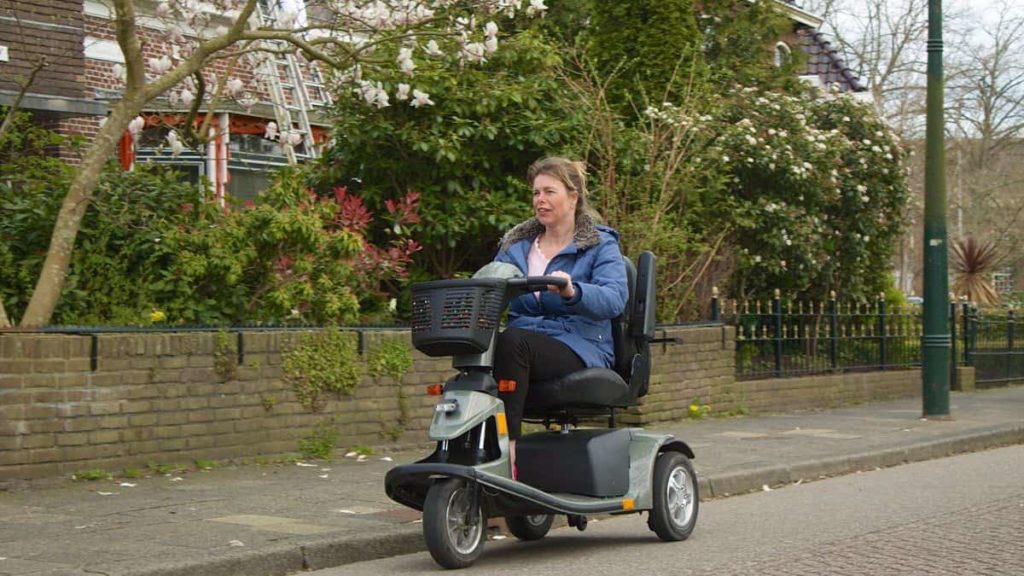Kathrine Switzer: A Running Pioneer
Kathrine Switzer has made history pioneering running for women, but she does not reside in the past. She is passionate about health, and wants the best for every individual. She is an Emmy award-winner, has been named Female Runner of the Decade by Runner’s World Magazine, and this past year, she was inducted into the National Women’s Hall of Fame. Despite her remarkable achievements, her impressive journalistic career, and her many accolades, she is kind, generous, and humble.
Her story is not history; her story is continuing. The valiant and inspiring woman continues to live a bold, healthful, and inspiring life.
Participation

At age 12, Switzer thought she wanted to be a cheerleader; her father told her that cheerleaders spectate, and that she wanted to participate. He encouraged her to try out for field hockey. As part of the game, she needed to “learn to run, and to run well.” Her father measured the yard, and Switzer began running a mile day; she made the team because of her conditioning. That daily mile helped her to realise that running built her endurance and would make her better at sports. For Switzer, running was “magical” at age twelve, and it is still magical after fifty-three years.
26.2 Miles
At age 20, Switzer ran the Boston Marathon. Participating in the Boston Marathon is no small feat today, but in 1967, running as a woman was an even greater challenge. At age 19, while Switzer was attending Syracuse University for her bachelor of arts degree in journalism and English, she asked the men’s cross-country coach if she could run on the team, considering there was no women’s team. While she was not allowed to run officially, she was welcome to work out with the team. During this time, she met Arnie Briggs, postman for the university. Arnie worked out with the team daily, after he finished his shift, and later became the unofficial manager of the team. Switzer and Arnie began running six to ten miles nightly. Arnie had run the Boston Marathon fifteen times, and Switzer credits him with teaching her about running.
Switzer suggested that she and Arnie run the Boston Marathon together. Arnie told her that women were incapable of running 26.2 miles. Switzer argued that women could run the distance, and Arnie said that if she ran 26.2 miles in practice, he would take her to the Boston Marathon. After training consistently, the two set up a trial course and ran, but as they neared the finish line, Switzer began to worry that they had mismeasured. To be certain that she would indeed be running the full distance, they continued for five more miles; after finishing thirty-one miles, Arnie passed out.
Outrage
The rulebook of the Amateur Athletic Union, of which Switzer was a member, addressed no gender limitations in the marathon category. Switzer, Arnie, Tom Miller, Switzer’s boyfriend, and John Leonard from their cross-country team sent in their applications, and on April 19, 1967, they showed up to the Boston Marathon ready to race. As she pinned on her number, other runners took notice of her gender, and became supportive of the fact that a woman was running the Boston Marathon.
Two miles into the race, a media flatbed truck loaded with photographers came through, followed by a bus holding journalists and co-race directors Will Cloney and Jock Semple. The photographers took notice of Switzer, who had made no attempt to disguise her gender. The journalists began teasing Jock Semple that a girl was in his race. Semple erupted. He leapt off the bus towards Switzer. She jumped away from him as he grabbed her shoulder, spun her around, and screamed, “get the hell out of my race and give me that race number.”
Switzer, frightened by the attack of this man out of control, tried to get out of his grasp. Arnie tried as well, but it was her boyfriend Tom who finally smacked Semple with a cross-body block. At first, Switzer was stunned. Then she was terrified and embarrassed. She had been made to feel “unwelcome, like a clown, and like she shouldn’t have been there.” Arnie told her to run, and she did. She became angry as she ran, once “the reality of the situation sank in.” However, she also understood that Semple was a “product of his time.” She finished the race at about 4 hours, 20 minutes, though her participation is recorded as unofficial.
Transformation
The Boston Marathon was a “transformational experience” for Switzer. She “started the race as a girl, and ended as a grown-up woman.” Switzer became determined to become a better athlete, and to ensure that women who wanted to run would not undergo the same treatment she did. When she returned to Syracuse, she formed The Syracuse Track Club, and encouraged women to join. Three years later, in 1970, she ran the Boston Marathon in 3 hours, 34 minutes. She, with other women runners, tried to convince the Boston Athletic Association to allow women to participate in the marathon. Finally, in 1972, women were welcome to run the Boston Marathon officially for the first time ever. Switzer continued to train vigorously, and ran her personal best of 2 hours, 51 minutes at the Boston Marathon in 1975.
Empowering Women
As Switzer ran her first Boston Marathon, having been interrupted and assaulted, she began to wonder why no other women were participating. While she ran, she thought, “women don’t get it.” Switzer later realised that she had been blessed with Arnie, and with parents who supported and encouraged her. She decided that it was her responsibility to create support for others.
Switzer concentrated on giving women the opportunity to run. After her training in journalism, she aspired to have a career in public relations. She promoted races, wrote sports columns, and commentated for televised running events. She went to the Munich Olympics in 1972 as a journalist, and realised that in order to create a substantial Olympic marathon specifically for women, a big sponsor would be required. Switzer wrote proposals to large companies, including Avon, and Avon contacted and hired her. She created the Avon Running Global Women’s Circuit, a series of running events for women in many countries, and it led to the inclusion of a women’s marathon in the 1984 Olympic Games.
Having women’s running represented at the Olympic Games “changed world thinking”; “millions of women could now take running seriously and aspire to the Olympics.” In the same way, Switzer’s persistence in pioneering running for women has changed society. In October 2011, she was inducted into the National Women’s Hall of Fame, but not for breaking the gender barrier at the Boston Marathon. She was inducted for creating a social revolution by empowering women around the world through running. Switzer says that “women whose lives have been changed are empowered,” and that “empowered women change society and other lives.”
During her work, Switzer has encountered Kenyan women living impoverished and difficult lives. “But those who could run,” Switzer says, “could break out of the sense of limitation”; “by racing, they often won money, and contribute to their villages by building wells, schools, and inoculating children.” These women are now “esteemed, valued, and important.” Switzer has seen that by running, “women are empowered”; “they expect more, gain influence, and see that they are somebody.”
The Joy of Running
Switzer says that running is “the hub of the wheel of her life from which all else radiates.” Running is a joyful experience that helps Switzer to feel “strong, healthy, and empowered.” To that end, Switzer runs five days per week; when she is training for a marathon, she runs five to six days per week. In addition to running, Switzer says that sleep is very important to her health. Though she never seems to find them in her busy schedule, Switzer aims for seven to eight hours of sleep per night. She also stretches and focuses on increasing her core strength, as it “helps everything.” While fitness may imply strict diets and stern limitations to some, Switzer is not overly “vigorous” about her fitness routine. She is self-disciplined, but she also “listens to [her] body”; “if it wants potato chips,” she says, “there’s a reason.”

Inventively, Switzer works from her computer standing up, instead of seated in a chair; her computer sits on a raised desk, and she stands before it. This arrangement exemplifies the role that fitness plays in Switzer’s life. Fitness is not a partitioned area from which she wanders; fitness extends to every part of her life, and she runs because of the exhilaration, health, and empowerment she has found in it.
The More We Do, The More We Can Do
Only recently has Switzer seen her first major injury. She has a sore Achilles tendon; she is “not losing self-esteem” because of it, but she acknowledges that her body is changing. “No matter what,” she says, “the body is regenerative”; “it rebuilds itself every seven years.” She advises that balance, cardio, and strength training are all “essential for good health.”
Although running is an integral part of her life, Kathrine is practical. She acknowledges the realities of busy schedules and time constraints, and even if she feels like she does not have time to run, she goes outdoors for ten minutes to get fresh air and sunlight. Switzer says that having a goal “creates focus”; “it gets us out the door.” Switzer has found that a run “washes the mind clean,” and can make her feel “validated and accomplished.”
Switzer advises increasing fitness to increase balance and thereby prevent falls. She also cites recent studies that show that “cardiovascular fitness forces the brain to grow new neurons, stalling dementia.” Switzer says that “we are just beginning to discover, scientifically, our capabilities and the miracle of the human body.” She says that we were born to run: “we are understanding better that the body was intended to work hard and not be sedentary.” Although her body has changed, Switzer affirms that “the more we do, the more we can do.”
It Is Never Too Late
Switzer has accomplished a lot; she has empowered women all over the globe, she has a successful career and entrepreneurship, and she has numerous professional accolades and personal triumphs. Yet she continues to “push barriers, challenge herself, and explore new pathways.” Switzer has seen individuals validated, a global mindset shift, and Olympic rules change. She believes that no matter your fitness level, experience, or background, “it is never too late to start to become an athlete.”
To learn more about Kathrine and her books, visit www.kathrineswitzer.com.
Jill believes that life just keeps getting better as she gets older. She believes everyone can live a full life of endless possibilities, with the right mindset, a healthy diet and with exercise.






